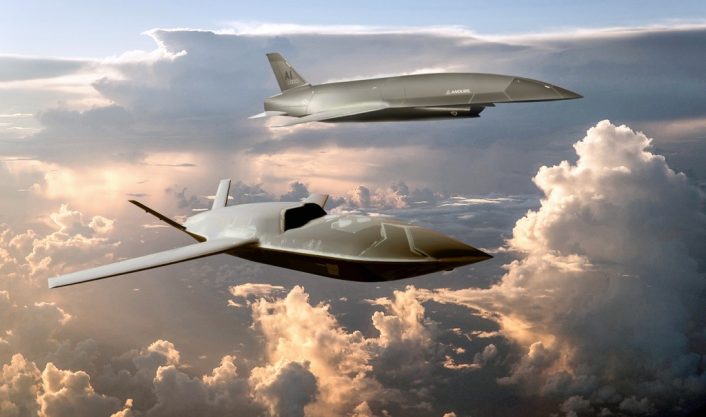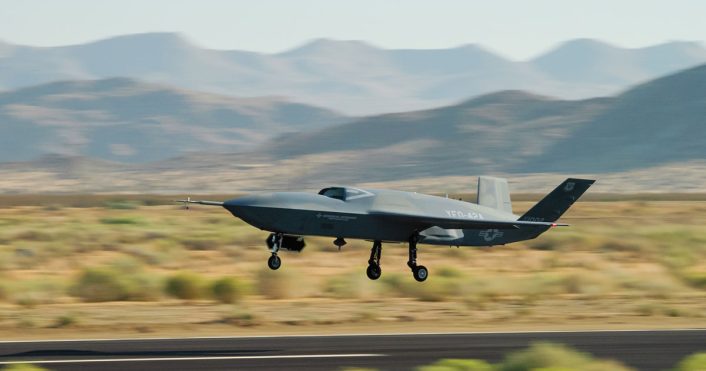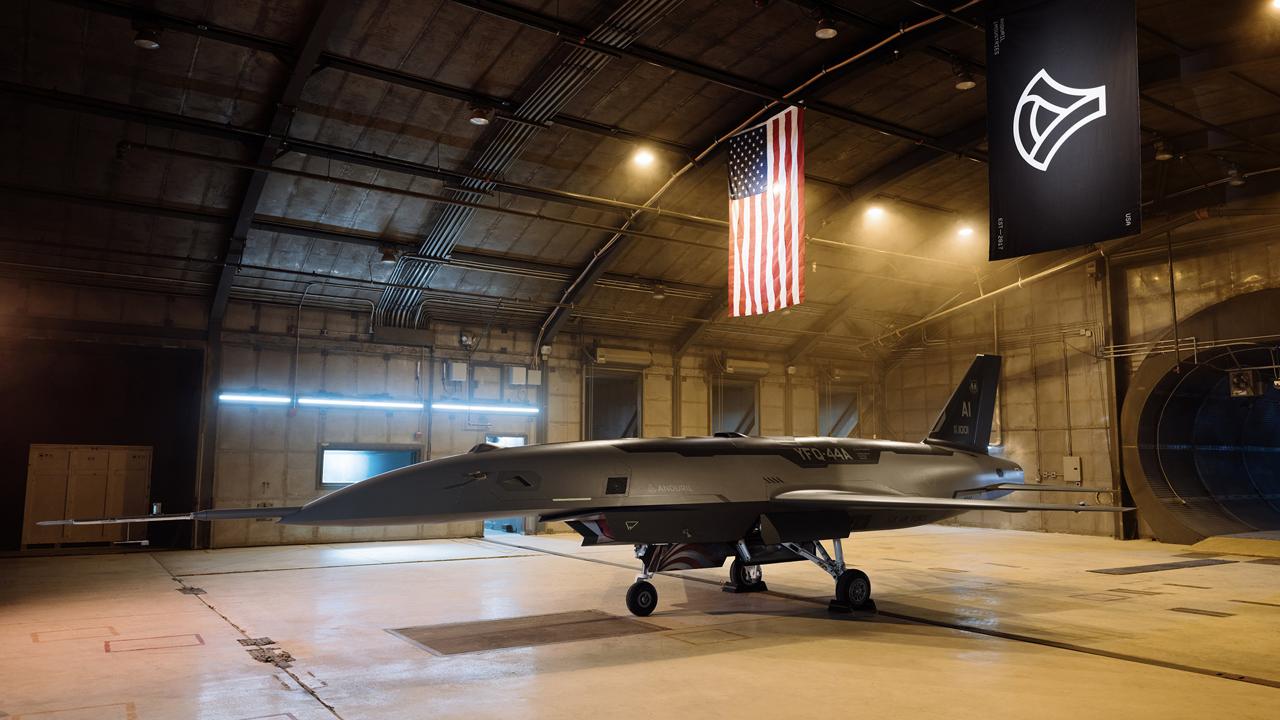With the YFQ-44 now in flight, the US Air Force’s two new collaborative fighter jets are undergoing flight testing.
The YFQ-44A collaborative combat aircraft (CCA) developed by Anduril made its first flight on October 31, 2025. Following this milestone, the US Air Force’s two new unmanned fighters are now undergoing flight testing as part of Increment 1 of the CCA program.
https://t.co/FBV38llbvd pic.twitter.com/SmffBOzurP
— TaskForce23 (@Task_Force23) October 31, 2025
The first flight of the YFQ-44 follows that of the YFQ-42A by General Atomics Aeronautical Systems in August 2025. Both drones were initially expected to begin flight testing in late summer.
“This milestone demonstrates how competition drives innovation and accelerates delivery. These flights give us the concrete data we need to shape requirements, reduce risk and ensure the CCA program delivers combat capability at a pace and scale that keeps us ahead of the threat.”
—Troy Meink, Secretary of the US Air Force
“USAF on first flight of Anduril’s YFQ-44A: ‘major milestone’ for CCA program as both prototypes have already flown”.
Flight testing expands knowledge about flight performance, autonomous behaviors, and mission system integration. https://t.co/RcLgVeD30E pic.twitter.com/qTbZJFlUFk
-Brian Everstine (@beverstine) October 31, 2025
The YFQ-44
The YFQ-44 was first presented in May 2025, following the announcement of the start of ground tests. Previously, the aircraft was only shown in renderings.
Since it has been described as a test vehicle representative of production, the aircraft may only have minor modifications, such as instrumentation to record test data. One of them is the flight test data probe installed in the nose of the aircraft, commonly seen on aircraft that are in the initial phases of flight testing.

One difference that immediately catches your eye, compared to previously released renders, is what appears to be a forward-facing camera mounted on top of the nose. This could be aimed at providing pilots with visual cues, either for control or situational awareness, although it is unknown if this will also be a feature of the final aircraft.
Another likely option, which would make sense given the air-to-air mission of the first CCAs, would be an infrared search and track (IRST) sensor, such as the one unveiled by Anduril in 2024, called Iris and marketed as a low-cost option for manned and unmanned aircraft. The fairing installed on the YFQ-44 also appears similar to the one shown in the company’s published photos of the Iris.
Collaborative fighter jets
The development of autonomous systems has progressed more rapidly than expected, leading some to suggest that the NGAD manned fighter may not be as essential as initially planned. Combining CCA with manned platforms such as the F-35 and F-15EX could provide a more affordable and flexible solution to achieving air superiority.
The increase in CCAs reflects the Air Force’s changing priorities, where a system-of-systems approach may take priority over a singular focus on a high-cost manned fighter. Combining manned and unmanned systems also allows for greater flexibility and the potential to deploy assets in more distributed and resilient ways.


The Air Force is advancing rapidly in CCA development, with plans to begin fielding more than 150 units over the next five years. These autonomous systems could take on a variety of missions, from surveillance to direct combat, working as force multipliers in collaboration with manned platforms, and taking on high-risk missions traditionally performed by manned fighters.
Unlike traditional fighters, CCAs feature modular designs, allowing for rapid upgrades and streamlined maintenance. Modular design and open architecture, the latter becoming a staple in modern military aircraft design, allows new capabilities to be introduced as they become available, which in turn allows the latest technologies to always be used to maintain an advantage on rapidly evolving battlefields.
In early 2024, Anduril Industries and General Atomics were awarded contracts to design and test production-ready CCAs, marking a critical step in the program. Both companies are developing these drones to support both upcoming NGAD fighters and current F-35s and other manned aircraft, sharing sensor data, executing coordinated maneuvers and potentially performing combat roles.
In early 2025, US Air Force Chief of Staff General David Allvin announced the official designation of the first two CCAs. The two aircraft from General Atomics and Anduril have been designated YFQ-42A and YFQ-44A, respectively, marking the first use of the “Unmanned Fighter” designation by the USAF.


“We have two collaborative fighter prototypes that were on paper less than a couple of years ago,” Allvin said. “For the first time in our history, we have a fighter designation on the YFQ-42 Alpha and YFQ-44 Alpha – perhaps just symbolic, but it tells the world that we are approaching a new chapter in air warfare.”
The Air Force plans to field a diverse fleet of more than 1,000 CCAs, designed with modular configurations for weapons, sensor capabilities and rapid adaptability to mission needs. A notable development in 2024 was the first flight of the XQ-67A, a low-cost drone designed by General Atomics under the Off-Board Sensing Station (OBSS) program, which occurred in February 2024.
This platform, along with the previous XQ-58A Valkyrie, demonstrates a “common chassis” concept: using shared components for multiple drone models to streamline production and reduce costs. This approach aims to provide a scalable, cost-effective solution to enhance combat capability without relying on high-cost manned aircraft, which is essential given the Air Force’s budget constraints and strategic emphasis on distributed and resilient forces.
“A competitive decision on Increment 1 production is expected in fiscal year 2026,” the Air Force says, “and development of Increment 2 will begin that same year to expand mission applications and integrate emerging technologies.”



